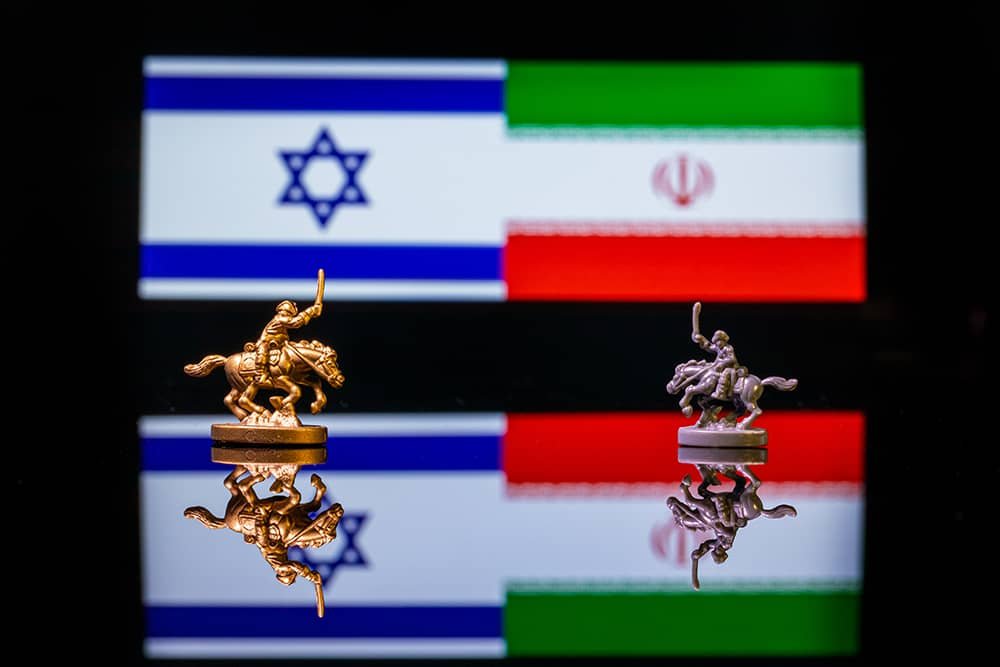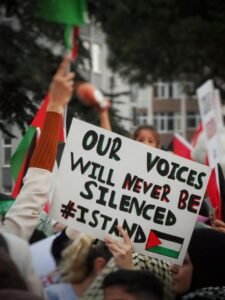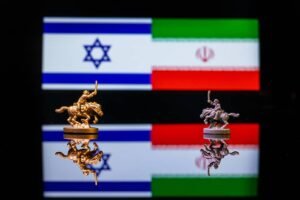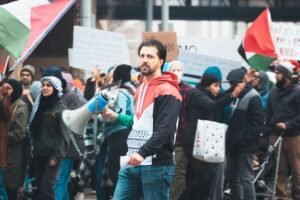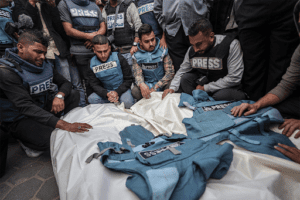Israel excels in military tactics. Also, Israel’s excellence never lasts, Well these are facts, and here is why.
Israel never succeeded in building a sustainable colony of Palestine. However, it managed to occupy the Palestinian Territories for a long time. This alleged excellence stops after a qualitative attack here, a bombing there, a ground incursion here, or a remote detonation there. The fact of the matter is that Israel has not been able to stabilize its position since the occupation started due to varying interactions that caused it to reconsider its strategic plans over the years. The victory achieved by the Palestinian factions since October 7th , 2023, with a considerably painful Palestinian human loss, was exported to Lebanon, Syria, and Al-Hodeidah Port in Yemen, according to a path that Israel knows by heart. This line is not a co-incidence or to open different fronts unconsciously or due to a defect.
Israel and the Brink Policy
Israel is intentionally working to open all fronts simultaneously in Gaza, the West Bank, Lebanon, Syria, Iraq and Yemen, aiming to provoke Iran to engage in a comprehensive conflict. Israel achieves its goal with Western sponsorship, specifically from the United States, in an attempt to drag Iran into supporting The Arab position; hence to declare a full scale war, and taming the axis of normalization. The American goal is to exhaust Iran and strike Russian interests in the Middle East, especially after the failure of the American political project in Iraq amid the military and political tyranny of the pro-Iranian factions in both Iraq and Syria after 2003 and during the war in Syria 2012-2017.
The American invasion of Iraq in 2003 disrupted the activation of the Mother of All Villages Theory, as did the Israeli strikes on the Palestinian resistance factions since 2008. Iran regained its powerful position after the war that was decided in favor of Hezbollah in Lebanon in 2006 and the dispute over the party’s involvement in Syria against the will of the Lebanese state. It is noteworthy that the Arab initiatives and the poles and centers of power in the region have elevated Iran – with exceptions – to replace Israel as the primary enemy. In fact, the UAE, the spear-head of normalization, has worked to systematically demonize the Palestinians and their factions to disrupt the projects of political Islam in the region, represented by the Muslim Brotherhood on one hand and the Shiite factions loyal to Iran on the other.
The Iranian-Israeli escalation is not the first
The clash represented by the response and counter-response with calculated skirmishes by Iran that extended over nearly a quarter of a century, escalated in October 2023 and early 2024 between Israel and the Palestinian resistance factions with Operation Flood of Al-Aqsa and confrontations that extended and branched out in Iraq, Syria, and then Yemen. Hamas inflicted resounding victories in the Zero Distance Operations on Israel, inflicting heavy losses in equipment and personnel, despite the enormous human cost among the Palestinians, as Israel committed war crimes and genocide fully scaled.
For years, Iran has adopted a strategy of forward attack or offensive defense, a philosophy it has adhered to in order not to drag the war into its territory and to replace the comprehensive conventional war with Israel by sending its agents in the region with little or no losses. From this standpoint, Iran’s operational weight came, for example, in the role of Hezbollah in Syria, and the militias loyal to it in Iraq and Yemen. Hence, Iran gains land and allies and does not lose much in the eyes of its people, except the sanctions imposed by the US, which it justifies with the narrative of “the cost of resistance” to hide its losses if any.
The Mother Of All Villages Theory
Iran implemented a theory that it established long before the invasion of Iraq in 2003, based on finding and establishing a physical depth of expansion that represents a corridor extending within countries in which Tehran attracts allies and entities that it established, all the way to the shores of the Mediterranean. If you recall the maps of the region before the end of the current millennium, you will see several extensions of Iran in Iraq and Syria ending in Lebanon. Each of these countries has interests, allies, and military and paramilitary entities, especially after the war in Syria since 2012. Iran’s pursuit of escalation waves between its allies or factions linked to it on the one hand and the American and Israeli forces on the other revived the flame of what was called the axis of resistance in Syria, Iraq, and Lebanon, and was joined by the Houthi Ansarulllah in the Gulf of Aden and Yemen. The real goal of defining this corridor is to expand into Iran’s strategic depth. Colleagues usually deal with the term “strategic depth” casually and in positions where the word does not scientifically apply. By following Iran’s regional path, we can explain Iranian behavior at this moment, which is highly disputed, seen in conflict as inaction or even fraud, as of last week after the delay in the Iranian response to the series of Israeli assassinations that targeted the operational leaders of the Palestinian Factions and both the head of the Hamas political Bureau Ismail Haniyyeah and the leader of Hezbollah, Hassan Nasrallah, in precise and qualitative operations.
Iran’s Strategic Depth
In military sciences, strategic depth is defined as the distance or military gains on the ground from the state’s frontline to its geographical depth on both sides of borders, linking this depth to the employment of human cadres over the years, and creating alternatives to the governance of agents by entrusting the monopoly of coercion, training, and supplies to gain post-marked lands to establish a strategic position of the state.
The Supreme Leader of the Iranian Revolution, Ayatollah Khamenei, explicitly said, “The regional presence gives Iran a greater national strategic depth,” considering that “the Iranian role in Iraq, Syria and Lebanon has obstructed American colonialism and blocked its path.”
According to the “Mother Of All Villages” theory, Iran is marking the regional expansion project starting with the creation of a corridor on the Mediterranean, to expand its strategic depth by creating ideological, political, military, and cultural ties with the aforementioned countries or specific components or entities in those countries.
The assassination of Hassan Nasrallah was a very painful blow to Iran. In previous stages, and now in calculated manner, Iran deploys militias linked to the Quds Force, the arm of the Iranian Revolutionary Guards. These factions are entrenched either to aid Iranian allies (Hezbollah’s intervention in Syria) or to lie in wait for American interests in the region (the operations of the Iraqi factions loyal to Iran in 2003 and the attacks of the Houthi Ansarullah in the Gulf regional seas) or even directly on the Israeli Frontline in Lebanon and Syria, while the Palestinian resistance in the Gaza Strip combat front against the occupation. Although this is to Iran’s liking, it does not push it to provide military support for the Gaza Strip, the West Bank, or in Jerusalem.
The “The Mother Of All Villages Theory” theory that Iran follows, frees it from geographical restrictions, enabling Tehran to influence every geographical and demographical influence in those countries that embrace the Shiite doctrine as a creed and ideology. Therefore, Iran has sought to establish a central impact among Shiites in all countries as a primary reference and religious guide, except for some armed factions led by Muqtada al-Sadr, for example, who came to this awareness of this dominance and was liberated from it during the sectarian war in Iraq 2005-2008.
Paths of the Iranian Regional Corridor
Iran is moving in three different directions to extend its line and dominate a straight land corridor. The first direction or path goes towards the Sinjar region in northwestern Iraq, passing through Hasakah in Syria, and up to the Port of Latakia (under US sanctions).
The second path follows the course of the Euphrates River up to Deir ez-Zor and Homs to Damascus, ending at the international road in Lebanon.
The third path starts from the Tanef border area in the far south of Iraq and Syria, reaching Damascus and ending at the international road in Lebanon.
In short, all paths start from Syria or Iraq and end at the Mediterranean Sea in Lebanon. These paths, if achieved without cutting off Iranian territory, protect Iran against any open confrontation and transfer the lines of defense and contact into the depth of each of those countries.
Why Lebanon?
The end of the Iranian paths and its agents in Lebanon each time came with the emergence of Hezbollah led by the late Hassan Nasrallah after the War of the Camps in Lebanon in 1982, recently in Gaza, Beirut, and the Revolutionary Guards, same force that eliminated the Israeli occupation of Lebanon in 2000 simultaneously with the Al-Aqsa ‘Intifada’ in the occupied Palestinian territories. Iran maintained its operational and political weight and invested in Hezbollah even after the sanctions to merge with the Quds Force – the arm of the Revolutionary Guards during the war in Syria until 2017, where the victory of the regime and the pro-Iranian militias was embodied after Russia entered the Tartus military port and the Hmeimim airport in western Syria.
Israel, Washington’s agent
The operations of Iran and its allies have always extended to vital targets without risking an open combat or a comprehensive conventional war. The intelligence operations that recently ended with the attacks on pager devices in southern Beirut and the southern suburbs of Lebanon uptil the assassination of Hezbollah’s Hassan Nasrallah were preceded by the bombing of the Iranian Natanz nuclear reactor in 2020 and the Karaj Facility in 2023. Iran has previously targeted vital American facilities in the region, such as The US military base in Jordan in 2024.
The coming few weeks will reveal Iran’s intentions strategically and militarily. Will it sacrifice deepening its strategy and adhere to the The Mother Of All Villages Theory, wasting opportunities ignoring Israeli provocations it in Lebanon, Iraq, Syria, and Yemen? will it modify the plan to directly clash with its opponent on several open fronts? Between either of those decisions, the face of war in the Middle East will inevitably change.
Sources:
Al-Ahram Center for Political and Strategic Studies (Strategic Notebooks) Issue 358.
“Khamenei: Iran’s policy succeeded in Iraq, Syria and Lebanon and defeated America” November 26, 2022.
Atlantic Council, Ray Zimmit How does the war in Gaza affect the future of the axis of resistance in Iran.
Ahmed Naji Qamha “Towards formulating a geostrategic framework capable of deterrence. – International Politics July 2018.
Mohammad Javad Larijani, Sayings on National Strategy “Explaining the Shiite Umm al-Qura Theory” Translated by Nabil Al-Atoum. “Commander of the Revolutionary Guards: Iran’s Strategic Depth Has Extended to the Red Sea” Middle East News, quoted from Strategic Notebooks Issue 358.

